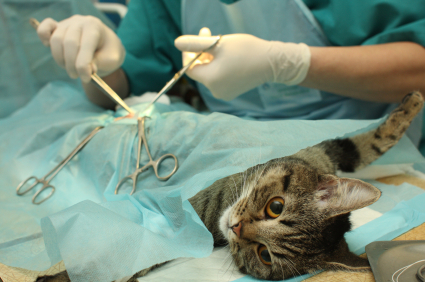Vet Clinics
VHS products have been developed to provide excellent cleaning while being environmentally sensitive. Our two sanitisers - Vetgene Surface Sanitiser and Halamid - have both been widely tested and proven effective against problematic bacteria, viruses, moulds and fungi that are encountered in a vet clinic.

Our Vetgene Surface Cleaner has been specifically developed to not inhibit either of our sanitisers so you can be confident you are providing the cleanest possible environment for your clients.
Our Halamid is approved by ACVM as a skin treatment to cleanse and disinfect animal skin and tests have proven that the use of Halamid on post surgical wound sites reduces the chance of infection (1).
Other VHS products suitable for the veterinary industry are AniLube Animal Examination Lubricant, Vetgene Anti Microbial Hand Wash (either Chlorhexadine or Triclosan based), Vetgene Chlorhexadine PreOp Wash. Currently under development Iodophor based Hand Soap, Iodophor based Pre-Op Cleanser and Sanitising Laundry Powder.
Click here to read Surgical Site Infection Article as published in Vet Script Magazine Sept 2010
(1). Wound Healing: Several studies were identified that investigated the effects of chloramine-T on wound healing. Brennan et al. (1986) compared the effects of chloramine-T and chlorhexidine with saline on 10 mm skin defects in Sprague-Dawley rats. Chloramine-T significantly delayed the production of collagen and prolonged the acute inflammatory response relative to saline. It was concluded that antiseptics might affect wound healing by secondary intention. Goetz et al. (undated abstr.) exposed rats with identical full thickness wounds by immersing in 150 and 250 ppm [533 and 888 μM] chloramine -T baths in an attempt to mimic the effects chloramine-T whirl pool treatments on wound healing. In a similar study using guinea pigs with full thickness wounds infected with Pseudomonas aeruginosa. The authors found that chloramines-T was an effective disinfectant in water, though it did not affect the rate of wound healing (Henderson et al., 1989). In an early rabbit study, it was concluded that chloramine-T (2% solution [71 mM]), while less irritating to skin than hypochlorite, it was also less effective in cleansing of necrotic tissue (Austin and Taylor, 1918). More recently Niedner (1997) indicated that chloramine-T
does not have as strong an inhibitory effect as the triphenylmethane dyes.
Please note Halamid contains 100% Chloramine-T.

 Blog
Blog